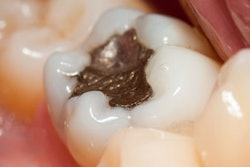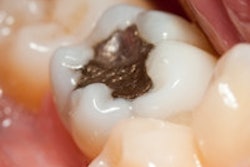
The International Association for Dental Research (IADR) has followed up a 2009 World Health Organization (WHO) report on the future of dental materials with two recent meetings designed to hash out an agenda for carrying out the WHO's recommendations and related efforts to reduce the use of mercury and phase down dental amalgam.
The first meeting, hosted at King's College of London on December 10-11, 2012, brought together representatives of the IADR, WHO, United Nations Environment Programme (UNEP), FDI World Dental Federation, and the International Federation of Dental Educators and Associations. Government agency representatives, dental materials researchers from leading manufacturers, and "sentinel centers for dental materials research" also were included.
The meeting was structured around the concept that dental restorative materials were lacking durability and resistance to fractures and wear. The respective role of each organization was recognized; for example, the WHO will focus on assisting governments in preventing oral disease, while IADR will facilitate the communication and application of research findings.
The FDI will work to put new research into practice and also has the difficult task of moving forward "a new paradigm shift" from restorative to a preventive/health promotion model. UNEP, meanwhile, has been crafting a legally binding treaty on mercury, in addition to working with governments in the realm of environmental protection.
New materials needed
At the London meeting, the participating stakeholders discussed a range of topics, including identifying performance gaps in the current armamentarium of dental restorative materials, promising areas of dental materials research, and developing a prioritized agenda and global action plan in dental materials research "to address individual and population-level health with environmental compatibility and economic feasibility," the IADR noted in a summary of the meeting.
The IADR presented information about the risks posed by restorative materials currently in use. "Safety is defined as freedom from unacceptable risks," the organization explained. "In terms of clinical risk, all restorative materials can be described as safe with less than 0.1% chance of reactions, which are local, compared to 12% for cosmetics."
There is "little apparent systemic toxicity" in dental restorative materials currently in use, the IADR added, although more data about bisphenol A (BPA) is needed because research has shown that it may be harmful. In fact, environmental concerns about mercury outweighed concerns about toxicity at the London meeting; according to the IADR, amalgam accounts for 2% of anthropogenic mercury emissions to air and roughly 8% of mercury demand or consumption in processes and products. The IADR also pointed to amalgam's superior longevity compared with resin-based composites and glass ionomers.
The properties of an ideal restorative "biologic biomaterial" were specifically outlined during the meeting. It "would seal the interface between the tooth and the restoration, be adhesive to the tooth with little or no shrinkage, interact favorably with carious dentin and enamel, be clinically easy to use in a variety of settings, and be fracture- and wear-resistant and repairable." Aesthetics, cost-effectiveness, and zero toxicity were among the items added to an ambitious set of features.
The involved organizations will wait patiently for that material to arrive. "All were committed to the goal of the workshop to develop a research agenda for better dental materials so that dental amalgam could be phased down," the IADR wrote.
Global mercury treaty unveiled
Interestingly, some amalgam supporters and antiamalgam groups both approve of the direction and pace of change under way. At a UN forum last week in Geneva, UNEP unveiled a draft treaty -- to be known as the Minamata Convention on Mercury -- that includes a section specific to dental amalgam.
The treaty, which has been four years in negotiation and will be open for signature at a special meeting in Japan in October, addresses the direct mining of mercury, export and import of the metal, and safe storage of waste mercury.
The treaty also pushes for the phase down of dental amalgam, such as incentivizing amalgam alternatives through insurance, focusing on these alternatives in dental schools, restricting encapsulated dental amalgam, focusing research on improving alternatives, and promoting dental caries prevention. In addition, the treaty specifies a best practice approach to minimizing the release of waste dental amalgam, currently typified by the use of amalgam separators in dental practices that permit the capture, separation, and eventual recycling of mercury.
The UNEP proposal elicited a positive reaction from the ADA.
"The ADA is gratified that the treaty conditions pertaining to dental amalgam protect this important treatment option without restrictions for our patients while balancing the need to protect the environment," the association stated in a press release. "The ADA is also delighted that the proposed treaty recognizes the need for national programs to prevent oral disease and calls for more research into developing new treatment options. Long term, it is critically important to raise global awareness of the importance of oral health to overall health, including how to prevent dental diseases. Doing so decreases the need for all cavity-filling and other restorative materials, including dental amalgam."
The Mercury Policy Project, an antiamalgam group that had representatives at the Geneva meeting, was also satisfied with the draft treaty, particularly its emphasis on phasing down the use of dental amalgam and developing alternative restorative materials.
"This is the beginning of the end of dental amalgam globally," Michael T. Bender, director of the Mercury Policy Project, stated in a press release. "We applaud the leadership role the U.S. played in jump-starting support for a phase down in 2011, along with the concrete steps of the Nordic countries, Switzerland, and Japan took in phasing out dental amalgam."



















